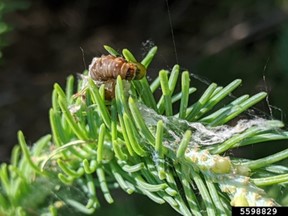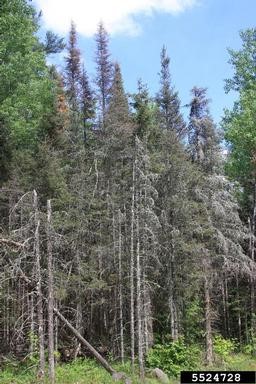In a recent webinar with the Invasive Species Centre, Dr. Felipe Dargent from the University of Ottawa explained how he and his team used isotopes to track the dispersal and origin of an invasive species destructive to Canada’s boreal forests.

The eastern spruce budworm moth (Choristoneura fumiferana) feeds mainly on balsam fir and white spruce, and is regarded as the most serious pest of fir and spruce trees in eastern North America. Outbreaks of this moth occur every 30 to 40 years and can defoliate vast expanses of boreal forests – an ongoing outbreak in Quebec has caused the defoliation of over 3.2 million hectares of forest in Quebec alone, with affected areas doubling each year. Tree death can occur after four to five years of severe defoliation, impacting both the Canadian ecosystem and economy.
Previous research demonstrated that the key driver of outbreaks is dispersal of moths from outbreak sites with high-densities of moths, to sites with low-densities of moths. The lack of natural predators allows the population growth of this moth to flourish in low-density sites. What was not well understood by the authors was the mechanisms of this dispersal process. Radio telemetry, population genetics, and other traditional methods for tracking species were not applicable to this species.

Instead, Dr. Dargent and his team investigated using isotopes, which are different forms of the same element that differ in atomic mass but not in chemical properties. Like all trees, balsam fir and white spruce, the main targets of the eastern budworm moth, contain isotopes.
Here’s what makes these atoms so useful to the researchers: the proportions of these isotopes within balsam fir and white spruce predictably differ across landscapes. When a budworm moth consumes balsam fir and white spruce needles, the isotope combinations specific to that area are integrated into the pest’s tissues, leaving a type of geographical imprint.
This phenomenon gave the researchers a method to map whether a particular spruce budworm is from a local or distant population, and, if the latter, the place of origin. These insights are necessary to fully understand the dispersion and infestation stages of the budworm moth, which can help researchers track, manage, and prevent this destructive pest in the future.
